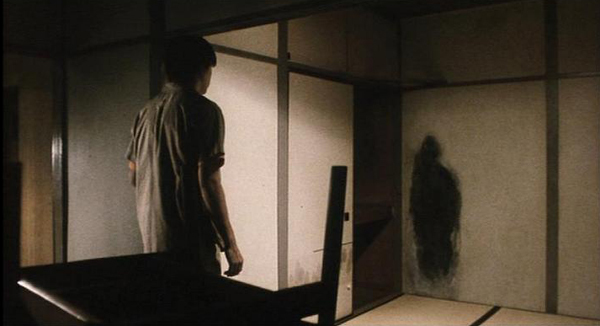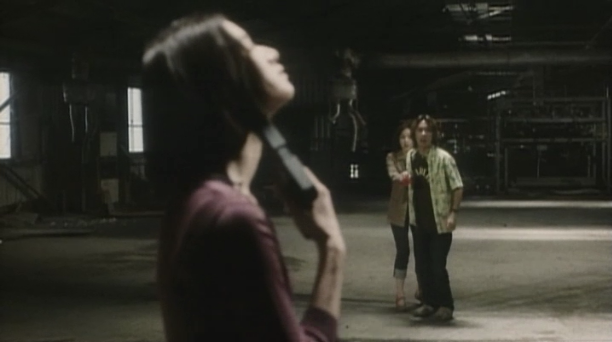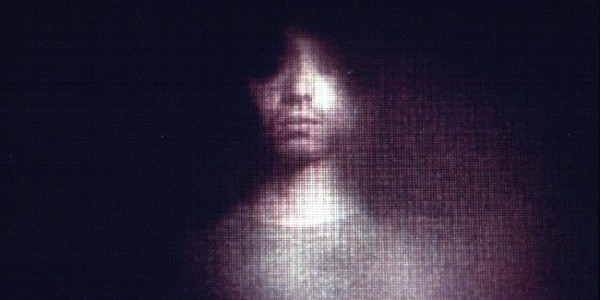Back in the early 2000s, I was one of those people eating up the J-horror craze that swept US theaters. Of course, I wanted to feel educated in the subgenre, so I would often rent the original versions prior to the remakes (which is something I still do). Through this process, I discovered plenty of other movies such as ACACIA and REINCARNATION. However, one standout was Kiyoshi Kurosawa’s KAIRO, also known as PULSE, a take on the dangerous effect of the booming online world.
The characters in PULSE are finding their friends and loved ones killing themselves or disappearing. Their behavior leading up to this comes off as desolate as they stop coming to work, or walk as if in a dream-like state. One person, Ryosuke, is new to the internet and is hilarious to watch as he inserts a CD to start up his service provider. His commentary throughout the process is relatable for people like me as I consider myself to be a bit computer illiterate. When he gets everything set up, his computer right away accesses a site that asks “do you want to meet a ghost?” along with some rather creepy videos of people simply sitting there, one with a bag over his head. We also follow another character, Michi, whose coworker just hung himself. She finds a disk in his room with footage of him just sitting at his computer. Both Michi and Ryosuke delve into their separate stories where they experience supernatural phenomena that may or may not be the dead reaching out from their computer screens.

The premise is utilized not to jolt audiences, but to rather create an atmosphere full of isolation and hopelessness. This is not an uplifting movie whatsoever, but succeeds in creating some truly effective scenes of unease. PULSE was the earlier voices that explored how the internet might keep us apart rather than unite. The ghosts in PULSE prey on those who feel alone and the internet is the best way to find them. With our connection speed becoming mainstream, our personal relationships turn strained and the need for eternal companionship is even greater. It really belongs in the category of arthouse horror and is a must-see for J-horror fans.

As usual, Arrow has provided plenty of special features that’ll keep fans busy. One of the new additions is a rather interesting interview with director Kiyoshi Kurosawa. He goes deep into his creative beginnings and his surprised reaction towards the overseas success of his films. An interesting feature on here, entitled “The Horror of Isolation,” is a video appreciation with Adam Wingard and Simon Barrett. In it they discuss their love for J-horror and how Kurosawa’s films influenced their work. Even more fascinating is there is an emphasis on how the American remake of RINGU worked almost as a catalyst for Wingard in his determination to become a horror director. The final new feature is an interview with cinematographer Junichiro Hayashi. For the completist like myself, Arrow has transferred over previous features such as an archival making of making of documentary and footage from the Cannes Film Festival. The package is sealed with reversal cover art and a booklet insert with an essay from Chuck Stephens.
Physical media collectors will treasure this new release. Even with just the 2.0 sound mix, the computer sounds and glitches are still just as effective. The eerie score that accompanies much of the first half of the film will increase your anxiety levels by 100 and that’s exactly how I wanted to feel when I made this purchase. Arrow has another winner here with PULSE and well worth the revisit.
Tags: Adam Wingard, arrow, Blu-ray, Chuck Stephens, Ghosts, Horror, japan, Junichiro Hayashi, Kiyoshi Kurosawa, Pulse, Simon Barrett



No Comments